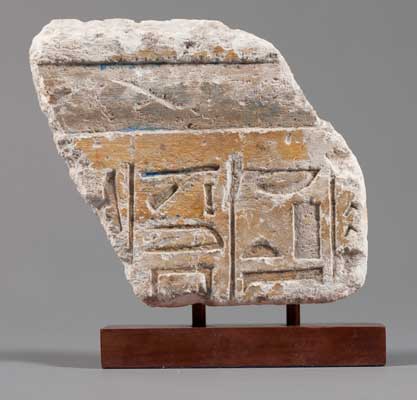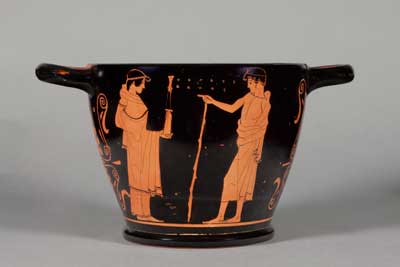
It's all Greek to Me
Most early scripts, such as cuneiform or Linear B, were syllabaries. This means that what was written were syllables (bu, ba, bi), not individual sounds. The disadvantage of such scripts is that they require many signs, at least several dozen in Linear B script, and several hundred in cuneiform. They also have great difficulty writing groups of consonants. For example the Hittite verb for "he struck" is walht, which ends up being written wa-al-ah-ta, with lots of dead vowels. But at least these scripts can write vowels!
Alphabets record phonemes, or individual sounds, instead. Egyptian hieroglyphic script is a complicated alphabet of consonants which arose from pictograms. The advantage of such a script is that it can cope with consonant clusters, but it can't write vowels (at least not unambiguously) at all. And, with several hundred signs, it's as difficult to learn as cuneiform.
The next big breakthrough, made by practical merchants in Phoenicia, was to develop a script which made do with just a handful of signs.

A fragment of a wall relief from El Amarna, showing hieroglyphs, which dates to around 1379-62 BC. Logie Collection Acc# 169.83
The idea in theory was: one consonant = one sign. In the Phoenician city of Ugarit an alphabet with 30 signs was used from ca. 1400-1200 BC. By the early 1st millennium the alphabet used by the Phoenicians, Israelites, and other Canaanites had it down to just 22 signs. These were all consonant scripts, however, with no reliable way to write vowels, so the reader often had to guess what word was actually meant by a group of signs. They could insert vowels this way for one word or another way for different word. But it was much easier to learn 20-30 signs as opposed to several hundred.
The most exciting step forward came with the Greek alphabet which, once again, practical merchants invented, possibly as early as the 11th or 10th century BC. They had travelled to Phoenicia and seen the Phoenician alphabet which they used as a model. They had one both unique and truly brilliant idea for how to improve it: have a sign for each consonant and one for each vowel. This gave an alphabet of about 25 signs (though the actual tally varies from region to region), and this handy and practical script could write most words with absolute clarity.

This mid 5th century BC skyphos from the Logie Collection features the Greek inscription 'ho pais kalos', which translates as 'the boy is beautiful'. Logie Collection Acc# 44.57